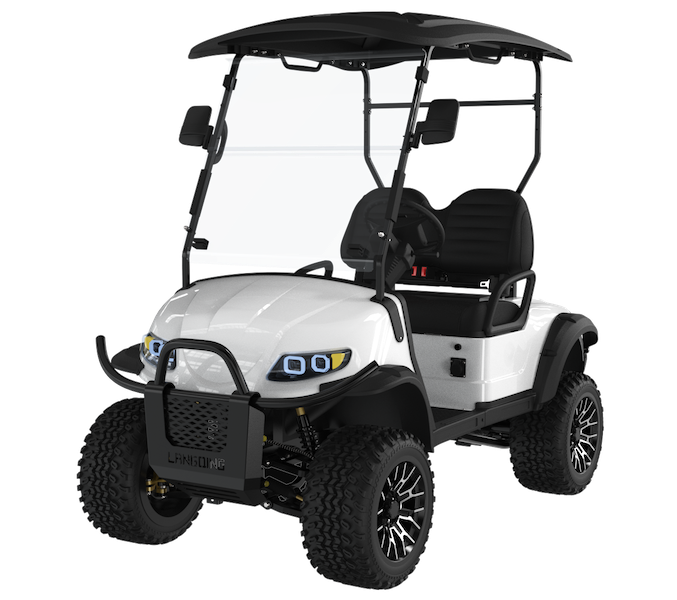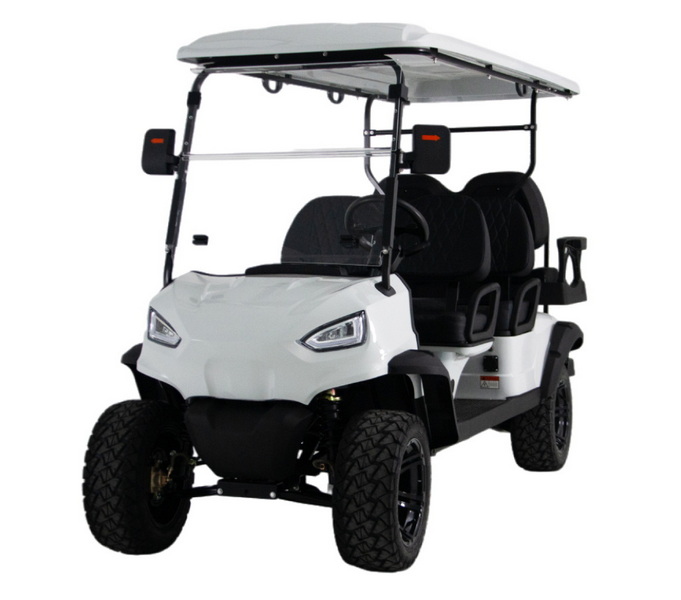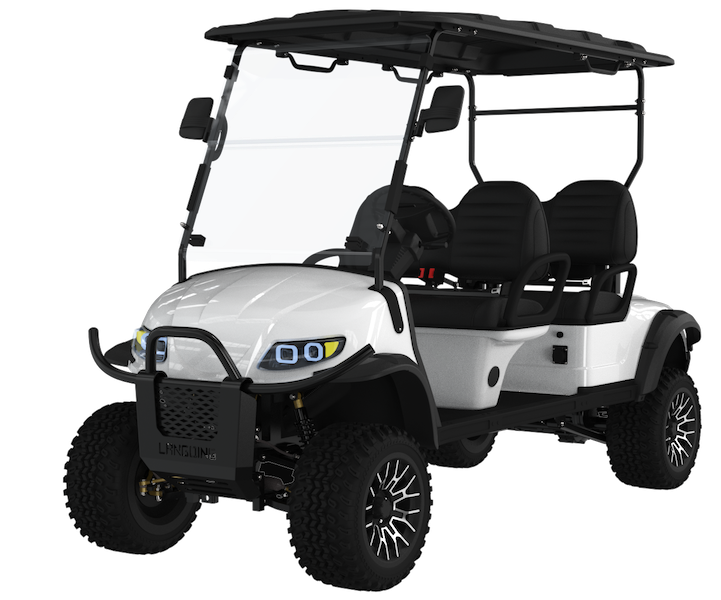Content Menu
● What Are Electric Golf Carts?
● What Are Utility Vehicles?
● Key Differences Between Electric Golf Carts and Utility Vehicles
● Benefits of Electric Golf Carts
● Benefits of Utility Vehicles
● Comparing Performance and Versatility
● Cost Analysis: Upfront and Long-Term
>> Electric Golf Carts
>> Utility Vehicles
● Environmental Impact
● Safety Features and Considerations
● Customization and OEM Opportunities
● Use Cases: Which Vehicle for Which Property?
>> Electric Golf Carts
>> Utility Vehicles
● Maintenance and Longevity
>> Electric Golf Carts
>> Utility Vehicles
● Conclusion
● FAQ
>> 1. What is the main difference between Electric Golf Carts and Utility Vehicles?
>> 2. Can Electric Golf Carts be used off-road?
>> 3. How long does it take to charge an Electric Golf Cart?
>> 4. Are Utility Vehicles available in electric models?
>> 5. What kind of maintenance do Electric Golf Carts require?
Choosing the right vehicle for your property can significantly impact efficiency, convenience, and overall satisfaction. Whether you manage a resort, a large estate, a golf course, or an industrial facility, the decision often comes down to two main contenders: Electric Golf Carts and Utility Vehicles. Both offer unique benefits, but which one truly fits your needs? This comprehensive guide explores every aspect of these vehicles, helping you make an informed decision for your property.

What Are Electric Golf Carts?
Electric Golf Carts are small, battery-powered vehicles primarily designed for transporting people and light cargo over short distances. Originally built for golf courses, their quiet operation, low emissions, and ease of use have made them popular in resorts, gated communities, campuses, and large private properties.
Typically, electric golf carts seat between 2 and 8 passengers, with speeds ranging from 15 to 25 km/h. Their range per charge usually falls between 30 to 60 kilometers, depending on battery capacity and terrain. These vehicles are ideal for people transport and light cargo duties, offering a smooth, quiet ride that is both eco-friendly and cost-effective.
What Are Utility Vehicles?
Utility Vehicles (UTVs) are robust, multi-purpose vehicles designed for hauling, towing, and navigating rougher terrains. They are commonly used in agriculture, construction, landscaping, and industrial environments. Unlike golf carts, utility vehicles are built to handle heavier loads and more challenging conditions.
Most utility vehicles seat 2 to 6 passengers and can reach speeds from 25 to 50 km/h. Their electric models typically offer ranges between 50 to 100 kilometers per charge, making them suitable for longer, more demanding tasks. Utility vehicles excel in heavy cargo transport, towing, and off-road navigation, often equipped with features like dump beds, plows, and tool racks.
Key Differences Between Electric Golf Carts and Utility Vehicles
The main differences between electric golf carts and utility vehicles revolve around their intended use, terrain capability, load capacity, and versatility. Electric golf carts are designed for smooth, flat surfaces and lighter loads, prioritizing passenger comfort and quiet operation. Utility vehicles, on the other hand, are engineered for rugged terrain and heavy-duty tasks, offering higher speed, greater load capacity, and enhanced durability.
Golf carts are highly maneuverable in tight spaces and are often preferred in environments where noise and emissions must be minimized. Utility vehicles provide superior traction and power, making them indispensable on farms, construction sites, and large industrial properties.
Benefits of Electric Golf Carts
Electric golf carts offer numerous advantages that make them a popular choice for many property owners:
- Environmentally Friendly: With zero emissions during operation, electric golf carts help reduce the carbon footprint of your property. This is especially important in areas with strict environmental regulations or where air quality is a priority.
- Quiet Operation: Their electric motors produce minimal noise, creating a peaceful atmosphere ideal for resorts, residential communities, and campuses.
- Low Maintenance: Electric golf carts have fewer moving parts than gas-powered vehicles, resulting in lower maintenance costs and less downtime.
- Cost-Effective: Operating costs are significantly reduced thanks to cheaper electricity compared to gasoline and fewer required repairs.
- Easy to Drive: Simple controls and a compact design make electric golf carts accessible to drivers of all skill levels.
- Customizable: From seating arrangements and colors to accessories like weather enclosures and entertainment systems, electric golf carts can be tailored to meet specific needs and branding.
These benefits make electric golf carts an excellent choice for properties focused on passenger transport and light cargo movement in controlled environments.
Benefits of Utility Vehicles
Utility vehicles bring a different set of strengths to the table, particularly suited for more demanding property management tasks:
- Versatility: Utility vehicles can handle a wide range of jobs, from hauling heavy loads and towing trailers to navigating uneven terrain.
- Durability: Built to withstand harsh conditions, these vehicles are rugged and long-lasting, designed for continuous use in tough environments.
- Higher Load Capacity: With payload capacities often exceeding 400 kilograms, utility vehicles can transport larger and heavier items than golf carts.
- Power Options: Available in both electric and gasoline models, utility vehicles provide flexibility depending on your operational preferences.
- Attachments and Accessories: Utility vehicles can be equipped with specialized equipment such as snow plows, dump beds, sprayers, and tool racks, enhancing their functionality.
For properties that require heavy lifting, off-road capability, and multi-purpose use, utility vehicles are often the preferred solution.
Comparing Performance and Versatility
When evaluating performance, electric golf carts excel in smooth, flat environments where frequent stops and starts are common. Their compact size and excellent maneuverability make them ideal for navigating tight spaces such as golf course pathways, resort grounds, and residential neighborhoods. Passenger comfort is a priority, with cushioned seating and smooth acceleration.
Utility vehicles, however, are built to tackle rough terrain and longer distances. Their superior traction and suspension systems allow them to operate effectively on dirt roads, hills, and uneven surfaces. Utility vehicles offer flexible cargo configurations, including larger beds and towing capabilities, making them indispensable for farms, construction sites, and maintenance operations.
Cost Analysis: Upfront and Long-Term
Electric Golf Carts
Electric golf carts generally have a lower purchase price than utility vehicles, making them an attractive option for budget-conscious buyers. Their operating costs are also low, as electricity is less expensive than gasoline, and maintenance is minimal due to fewer mechanical components.
Utility Vehicles
Utility vehicles tend to have a higher initial cost, reflecting their advanced features and heavier-duty construction. Operating costs can be higher, especially for gasoline models, due to fuel consumption and more frequent maintenance. However, the increased utility and durability often justify the investment for demanding applications.
Environmental Impact
Electric golf carts are a standout choice for environmentally conscious property owners. Their zero-emission operation helps reduce pollution and noise, contributing to a cleaner and more pleasant environment. This is particularly beneficial in residential areas, parks, and resorts where preserving natural beauty and air quality is essential.
Utility vehicles, especially those powered by gasoline, have a larger environmental footprint. However, the growing availability of electric utility vehicles is helping to bridge this gap, offering similar eco-friendly benefits while maintaining the power and versatility required for tough jobs.

Safety Features and Considerations
Safety is paramount when selecting any vehicle for property use. Electric golf carts typically include speed limiters to prevent excessive speeds, optional seat belts, and an open design that enhances driver visibility. Their low speeds and smooth operation reduce the risk of accidents in pedestrian-heavy areas.
Utility vehicles come equipped with robust safety features such as roll cages, enhanced lighting for low-visibility conditions, and advanced braking systems designed to handle heavy loads. These features are crucial when operating in rugged terrain or carrying substantial cargo.
Customization and OEM Opportunities
Both electric golf carts and utility vehicles offer extensive customization options, making them ideal candidates for OEM partnerships. Manufacturers can tailor vehicles to meet specific branding, functional, or regional requirements.
Electric golf carts can be customized with various seating layouts, colors, logos, and entertainment systems, enhancing guest experience and brand visibility. Utility vehicles can be equipped with specialized beds, tool racks, climate control systems, and safety features tailored to industry-specific needs.
OEM services allow property owners and businesses to receive vehicles that perfectly align with their operational demands and aesthetic preferences.
Use Cases: Which Vehicle for Which Property?
Electric Golf Carts
- Golf Courses: Transporting players and their equipment efficiently and quietly.
- Resorts: Shuttling guests between amenities without disturbing the peaceful environment.
- Campuses: Moving staff, students, and visitors quickly across large grounds.
- Gated Communities: Providing convenient personal transportation for residents.
Utility Vehicles
- Farms: Hauling feed, tools, and equipment across fields and rough terrain.
- Construction Sites: Moving materials and personnel safely and efficiently.
- Industrial Facilities: Towing heavy loads and performing maintenance tasks.
- Parks: Supporting landscaping and groundskeeping operations.
Maintenance and Longevity
Electric Golf Carts
Maintenance for electric golf carts focuses primarily on battery care, including regular charging and inspections to maximize lifespan. Tires, brakes, and electrical systems require periodic checks, but overall maintenance demands are low. With proper care, electric golf carts can remain in service for 5 to 10 years.
Utility Vehicles
Utility vehicles require more frequent maintenance due to their heavy-duty use. Regular servicing of tires, brakes, suspension, and engine components is necessary to ensure reliability. Proper upkeep can extend their lifespan to 7 to 12 years, depending on usage intensity and environmental conditions.
Conclusion
When choosing between Electric Golf Carts and Utility Vehicles, the decision hinges on your property's specific needs. Electric Golf Carts excel in comfort, quietness, and eco-friendliness, making them ideal for transporting people and light cargo in serene environments. Utility Vehicles, on the other hand, are built for power, versatility, and rugged tasks, perfect for operations demanding heavy-duty performance.
Both options can be tailored through OEM services to match your brand and operational requirements. Evaluate your property's terrain, daily tasks, and long-term goals to select the vehicle that will deliver the best value and performance.

FAQ
1. What is the main difference between Electric Golf Carts and Utility Vehicles?
Electric Golf Carts are designed primarily for transporting people and light loads on smooth surfaces, while Utility Vehicles are built for heavy-duty tasks, rough terrain, and carrying larger cargo.
2. Can Electric Golf Carts be used off-road?
Electric Golf Carts are best suited for flat, paved, or grassy areas. For rough or uneven terrain, Utility Vehicles are a better choice.
3. How long does it take to charge an Electric Golf Cart?
Charging times vary, but most Electric Golf Carts require 6-8 hours for a full charge using standard chargers.
4. Are Utility Vehicles available in electric models?
Yes, many manufacturers offer electric Utility Vehicles, providing the benefits of electric power with increased load and towing capacities.
5. What kind of maintenance do Electric Golf Carts require?
Regular battery checks, tire inspections, and occasional brake servicing are the main maintenance tasks for Electric Golf Carts. They generally require less upkeep than Utility Vehicles.




















































